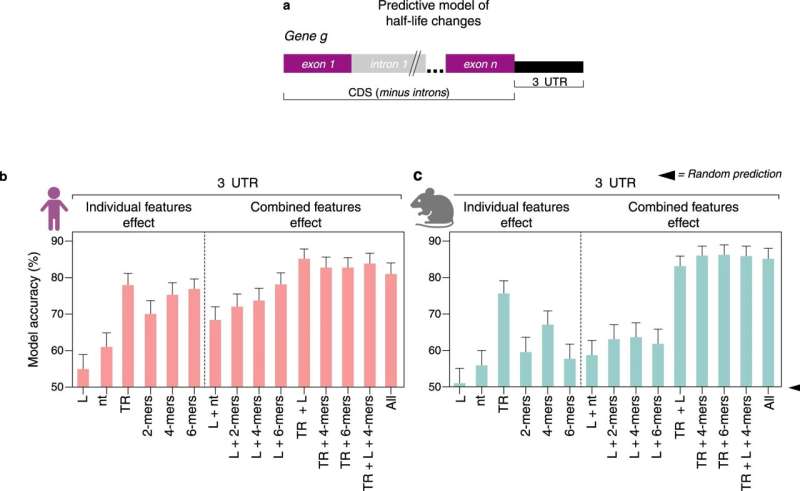This article has been reviewed according to Science X's editorial process and policies. Editors have highlighted the following attributes while ensuring the content's credibility:
fact-checked
peer-reviewed publication
proofread
Cellular 'cruise control' system safeguards RNA levels in Rett syndrome nerve cells

Every cell in our body is able to turn genes (DNA) on or off, producing RNA, but when genes are "turned on" to the wrong level it can result in a variety of health conditions.
Rett syndrome is a rare neurodevelopmental condition that causes a loss of motor and language skills over time in girls. The condition is caused by a genetic variation in the MECP2 gene located on the X chromosome, resulting in affected nerve cells in the brain expressing the wrong levels of more than one thousand genes. The end result is that Rett syndrome nerve cells are smaller, less interconnected and less electrically active than healthy controls.
In a study published in Nature Communications, researchers at The Hospital for Sick Children (SickKids) in the Dr. James Ellis Lab show that for people with Rett syndrome, nerve cells have a way to partially compensate for these genetic changes through a process called transcriptional buffering.
Using stem cells from a patient with Rett syndrome, the researchers grew nerve cells and employed a special type of RNA sequencing called RATESeq. With the help of collaborating labs led by Drs. Mike Wilson and Olivia Rissland, RATESeq allowed the team to directly measure how fast new RNA is made and broken down in cells.
"This study is one of the first in the world that combines measurements of both transcription and the breakdown of RNA molecules in human disease," says Dr. Deivid Rodrigues, co-first author of the paper and a Research Associate in the Developmental & Stem Cell Biology program at SickKids. "What we found revealed exciting new insight that transcriptional buffering occurs in Rett syndrome nerve cells, driven by changes in RNA stability."
What is transcriptional buffering?
RNA is made through a process known as transcription, which happens in the cell nucleus. Proteins then bind the RNA and transport it to the cell cytoplasm where it is eventually broken down.
In the absence of the MECP2 gene in Rett syndrome nerve cells, the cell nucleus turns genes on to the wrong level and produces either too much or too little RNA. Rodrigues and co-first author Marat Mufteev, a Ph.D. student in the Department of Medical Genetics at the University of Toronto, found that when the wrong levels of RNA are transferred to the cytoplasm their stability changes. The cells balance the total amount of RNA produced in a process called transcriptional buffering.
Using machine learning, the researchers showed that transcriptional buffering uses proteins that bind to RNA and shuttle it from the nucleus to the cytoplasm, where they control RNA breakdown. In Rett syndrome, only about half of the genes are transcriptionally buffered leading to modest, but impactful, two-fold changes in RNA levels.
"For people with Rett syndrome, the process of making RNA is like a novice driver in a car struggling with jerky accelerations and screeching stops," explains Dr. James Ellis, lead author and Senior Scientist in the Developmental & Stem Cell Biology program. "One way to moderate these exaggerated movements is by using a 'cruise control' system that can maintain a constant speed. This is done in the human brain by transcriptional buffering."
'Cruise control' system defends against RNA changes
By safeguarding the healthy levels of so many genes, transcriptional buffering acts as a defense against genetic variations that change RNA production, such as those seen in Rett syndrome. It reveals a new molecular mechanism in human cells that may also play an important role in regulating RNA levels in typical development.
"While our research is currently limited to Rett syndrome, we are hopeful that by better understanding transcriptional buffering we can gain new insights into the development of typical cells and conditions whose effects reach beyond nerve cells," says Ellis.
The researchers note a greater understanding of the buffering mechanism may help future investigations into using transcriptional buffering to help treat the effects of Rett syndrome.
More information: Deivid C. Rodrigues et al, Buffering of transcription rate by mRNA half-life is a conserved feature of Rett syndrome models, Nature Communications (2023). DOI: 10.1038/s41467-023-37339-6




















